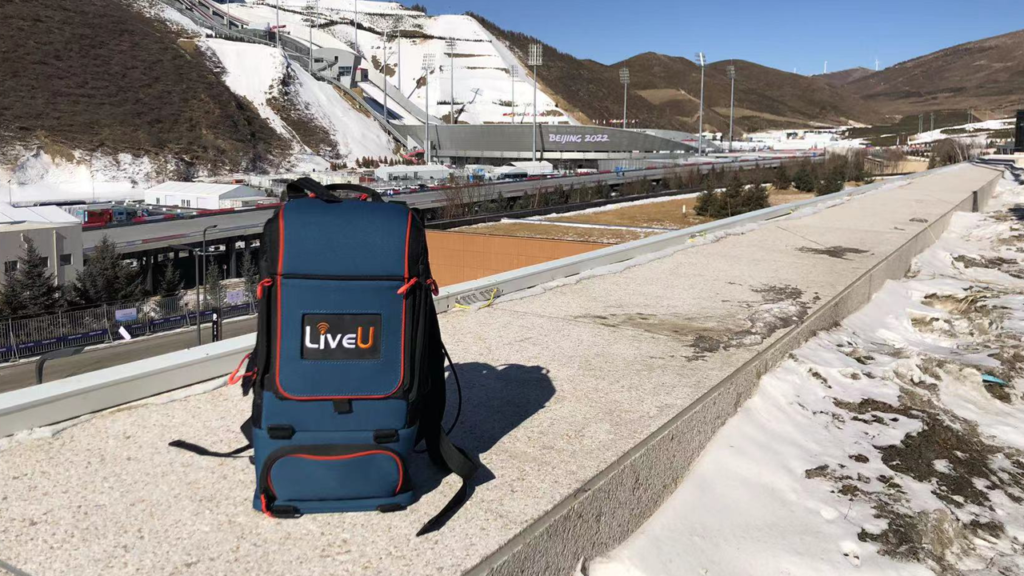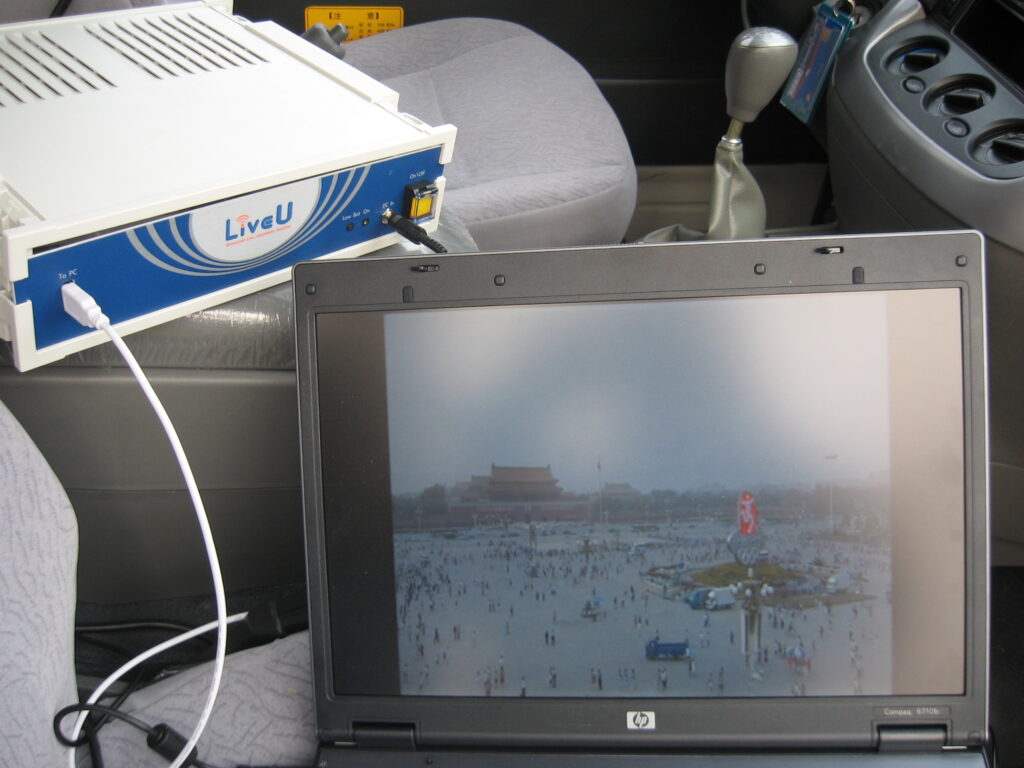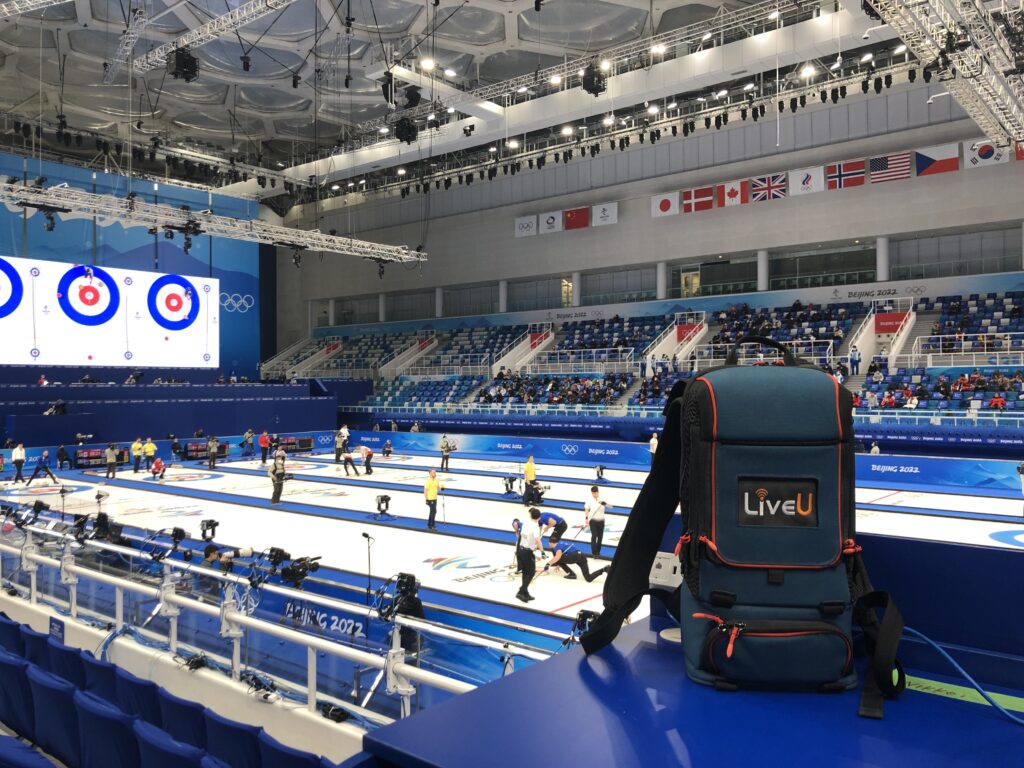From Beijing 2008 to Beijing 2022: Driving the paradigm shift in live broadcasting
By: Samuel Wasserman, CEO and Co-founder, LiveU

Seeing the Beijing Games, with the incredible athletes and Opening Ceremony, has been especially emotional for me and our company – coming full circle for us, back to where it all started. The ceremony was held at the same stadium that hosted the 2008 Summer Games, Beijing National Stadium.
I still remember when we joined forces with the NBC team to assist with the marathon transmission and other events at the 2008 Games. Back then, our LiveU pack consisted of a laptop, connected to a box with cellular modems and a camera, not more than a mature prototype. The device was operating over 3G with very low bandwidth per modem but even in those early days, the bonding did the magic like it does today.
Our small team was flown to Beijing in 2008 with the LiveU backpack. Using a crane, they operated the device in Tiananmen Square to provide the live backdrop for the NBC anchors. NBC reporters also used the device to interview people "in the street" and cover the marathon in places where the satellite truck couldn’t reach – providing one of the first use cases of the portability of the system.
To be honest, NBC didn’t use it for long periods of broadcasting, but it was enough for them to understand that this technology had a future and could be the way TV production was going, replacing traditional live transmission solutions.

My colleagues and I knew the demand was there and that if we could create a way to enable high-quality reliable live broadcasts from anywhere, at low cost and with a low footprint, the sky was the limit. We found those visionaries at NBC and I’m happy to say that our collaboration continues to this day.
Looking back, we couldn’t have fully seen the way cellular bonding would disrupt the industry, as we step-by-step reached out to other broadcasters. It was hard sometimes to get the message across that what they were holding in their hands was the future. However, with the advancements of cellular networks to 4G LTE aligned with those of our own technology, we started to see entire news cast filled with LiveU coverage, followed by live sports using both 4G and 5G – making it the worldwide standard in live broadcast.
Since 2008, we’ve been setting new milestones for ourselves at every major event. Last year’s Tokyo Games was a pinnacle moment with hundreds of broadcasters using over a thousand units at a time where the pandemic was still in full force. Without spectators able to enjoy the games in person, and other restrictions, LiveU became a critical way to deliver the sights and sounds to every home, demonstrating the power of remote productions. The uniqueness of the technology’s flexibility is clearer than ever, not only covering the main events from multiple angles with engaging images but also letting viewers experience so many other moments – athletes’ reactions after the finish, fans watching outside the stadiums, coaches’ feedback in the locker rooms and the medal ceremonies. With the growing demand for live content, our solutions help to build a bridge between the athletes and viewers worldwide, delivering the full sports experience.
Today LiveU is synonymous with quality and reliability – acquiring and distributing video from the field, helping broadcasters, sports organizations and producers deliver and manage their workflows up until distribution to outlets around the world. In addition to the transmission, we now provide cloud and other services in the live workflow.
Now, once again in Beijing, LiveU solutions are there in great number, covering every sport as well as the opening ceremony – bringing the international competition live to TV and online viewers all over the world.

The last 15 years have seen so many milestones, including the US Presidential Election, NASA Apollo 11 Anniversary, UK Royal Wedding, Guinness World Records, major international football tournaments (we’re already looking forward to Qatar!) and much more. However, the 2008 Games will always have a special place in my heart.
A paradigm shift was created in live broadcasting, reducing a huge barrier of entry related to SNG/OB trucks, enabling customers to go places they couldn’t go before, enriching live broadcasts and adding more dimensions than ever before.

